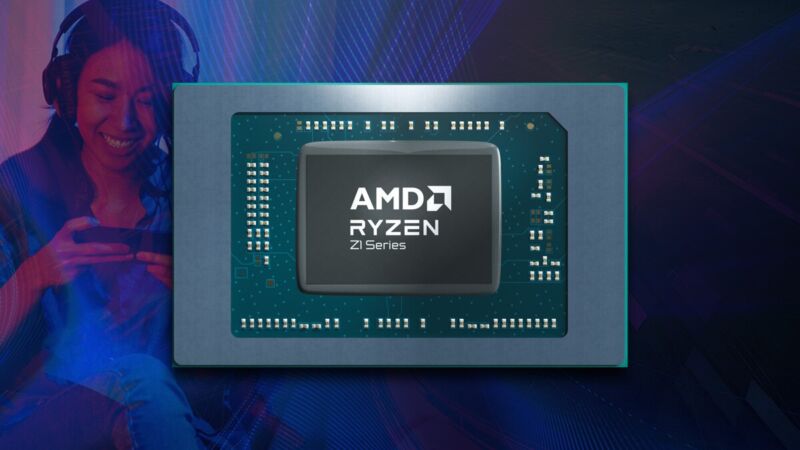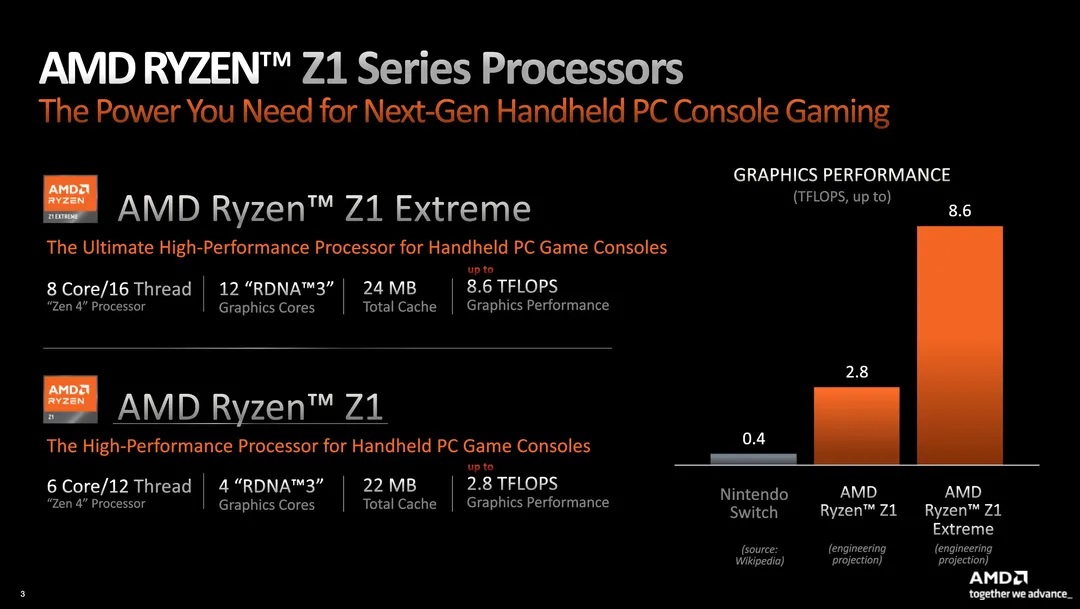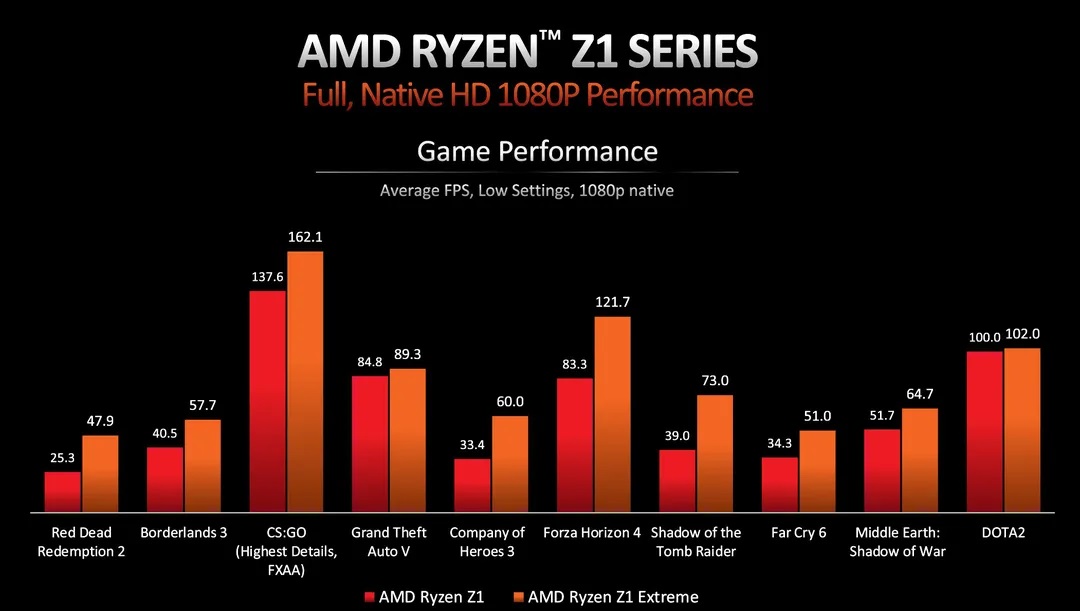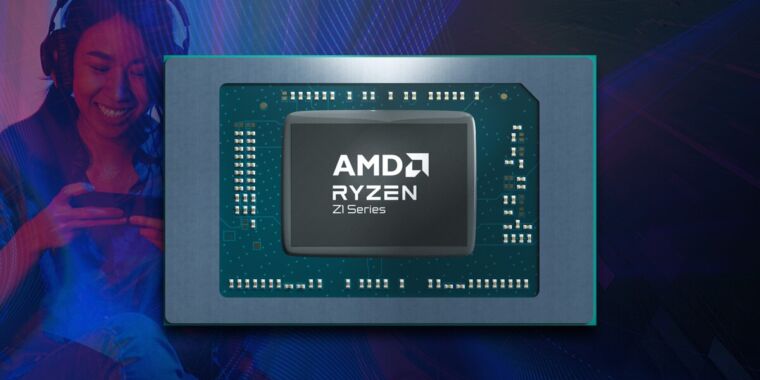
amd
Nvidia GPUs power the vast majority of gaming PCs, but for more integrated gaming systems like consoles and handhelds, AMD’s ability to offer tightly integrated Ryzen CPUs and Radeon GPUs has brought in a lot of customers (and a lot of revenue). The most notable of these is Valve’s Steam Deck, which combines a Zen 2-based CPU and RDNA 2-based GPU cores to provide reasonable performance for most games.
While AMD designed the Steam Deck chip exclusively for Valve, today the company is announcing a pair of Ryzen chips aimed at the growing number of Steam Deck-like handheld PCs from other companies. The Ryzen Z1 and Z1 Extreme (respectively) combine 6 or 8 Zen 4-based CPU cores with 4 or 12 RDNA 3-based GPU cores, leveraging AMD’s latest architectures and a 4nm manufacturing process to outperform the Steam Deck’s APU.

The Z1 and Z1 Extreme are new APUs made specifically for portable gaming PCs like the Steam Deck.
amd
AMD says (via The Verge) that the Ryzen Z1 can run games about 55 percent faster than the Steam Deck, reflecting the improved performance and efficiency of the newer architectures and manufacturing process. Interestingly, the Z1 Extreme’s extra GPU cores (12, versus 4 in the Z1) improve gaming performance, but they don’t come close to tripling or even doubling. The extra hardware helps, but we’re still dealing with integrated GPUs here, coupled with a relatively slow pool of DDR5 that they share with the rest of the system rather than dedicated GDDR6 or GDDR6X memory.
The specifications of the Z1 chips resemble some of AMD’s upcoming Ryzen 7000U processors for ultrabooks and thin and light gaming notebooks, but AMD says the Z1 chips use “custom current and voltage curves” and “other differences” they make it better -suitable for handheld systems.

The Z1 Extreme has three times the GPU cores of the Z1, but the memory bandwidth limitations mean that performance doesn’t scale linearly.
amd
The Ryzen Z1 chips will initially power the Asus ROG Ally, an upcoming handheld gaming PC that Asus confusingly decided to announce on April 1. Many companies use April Fools’ Day as an excuse to make “funny” prank announcements, and had to reassure people afterwards that “it’s real” and “wasn’t an April Fool’s joke”. [sic] joke.”
AMD says Asus will announce more about the ROG Ally on May 11. AMD’s performance numbers are all from a ROG Ally prototype running in “Turbo Mode”, which allows the APU to draw up to 30W of power; modes that reduce performance in favor of better battery life may not perform as well.
While Ryzen Z1-based handhelds should be capable of faster overall performance than the Steam Deck, Valve’s SteamOS may still have a competitive edge. Other handheld PCs, such as the AYA Neo, shipped with Windows, which has great game compatibility, but the mouse and keyboard-oriented user interface doesn’t sit well with small-screen handhelds. Some engineers within Microsoft have been testing a “handheld mode” that would fix some of these issues, but we don’t know when (or if) it will see the light of day.

